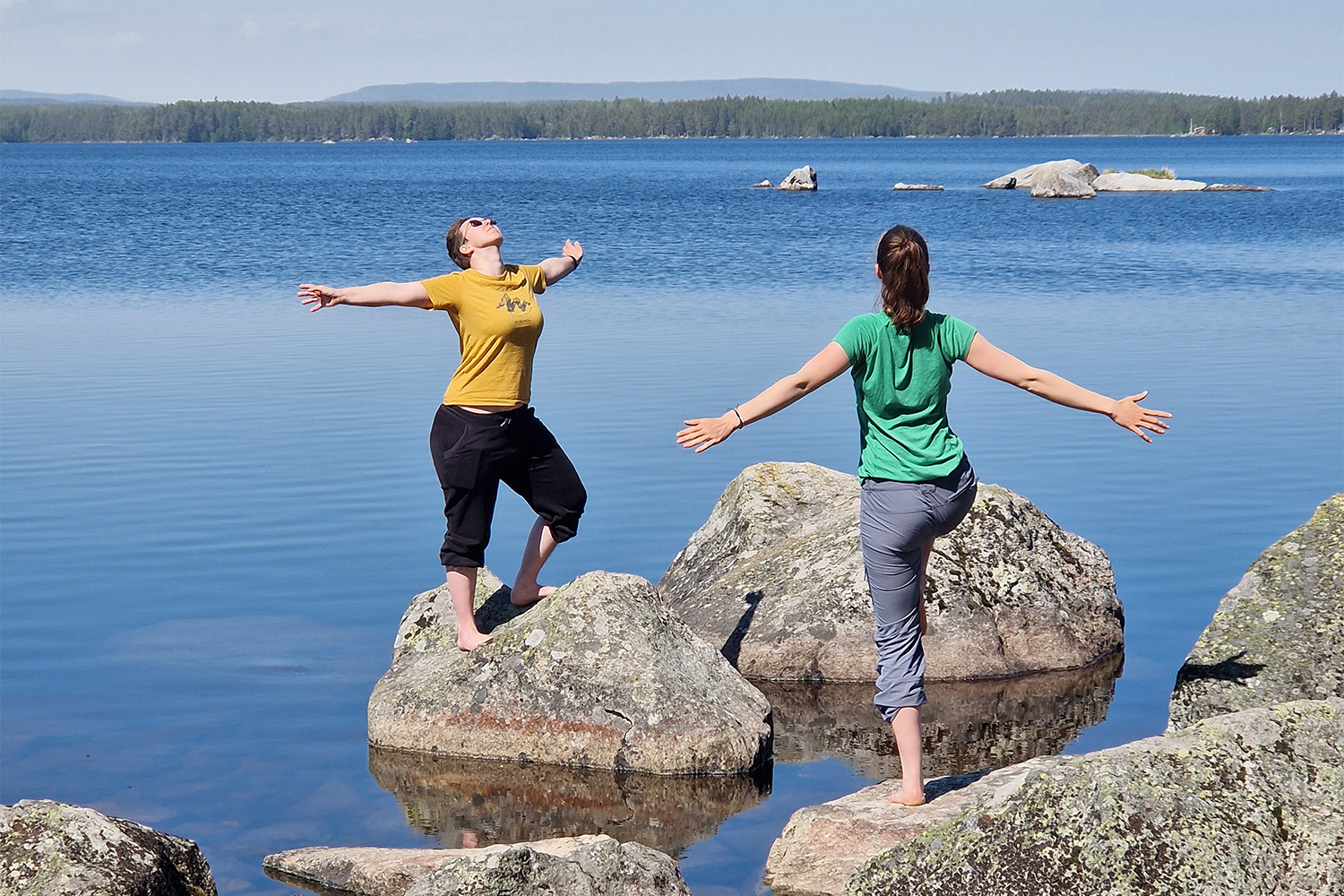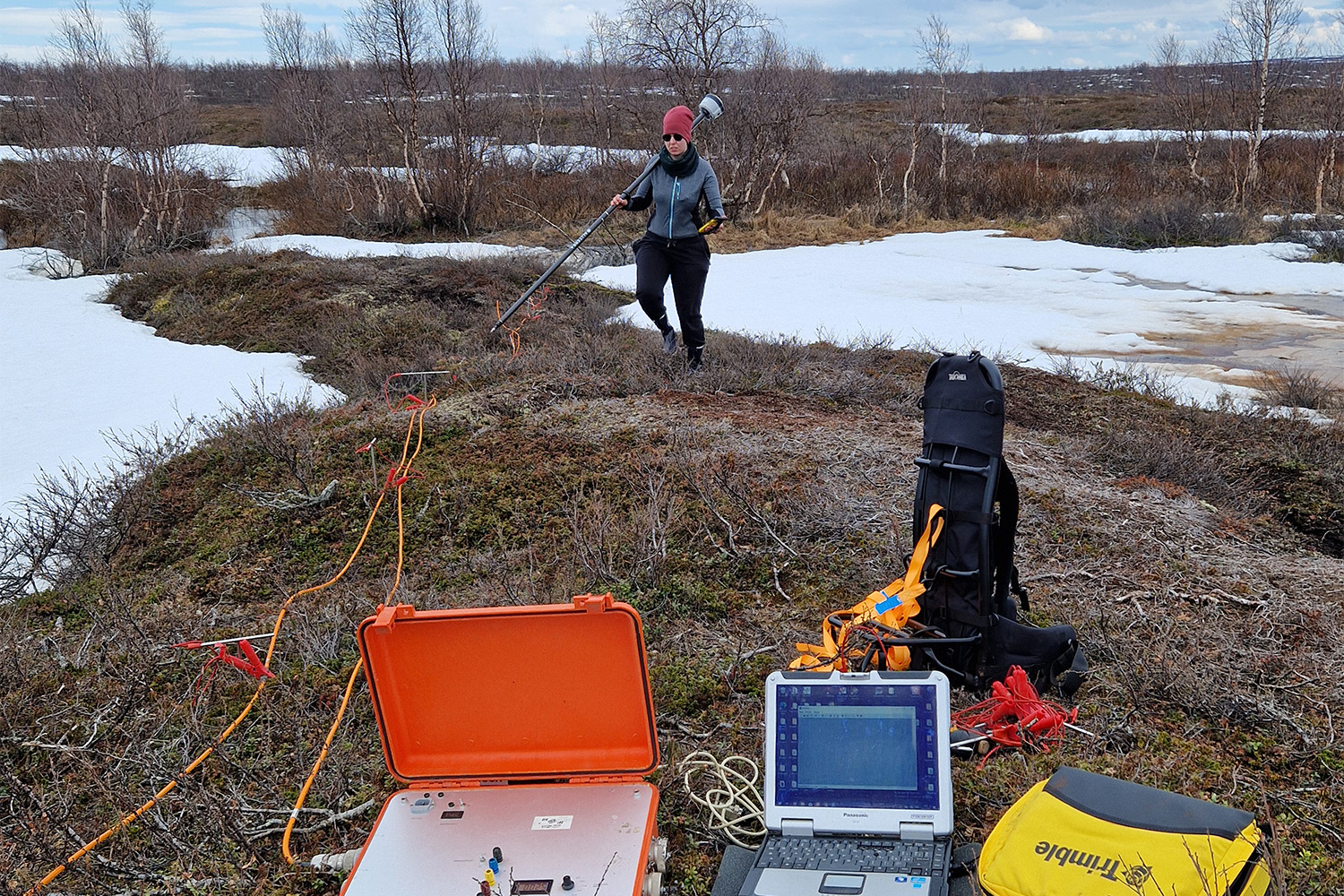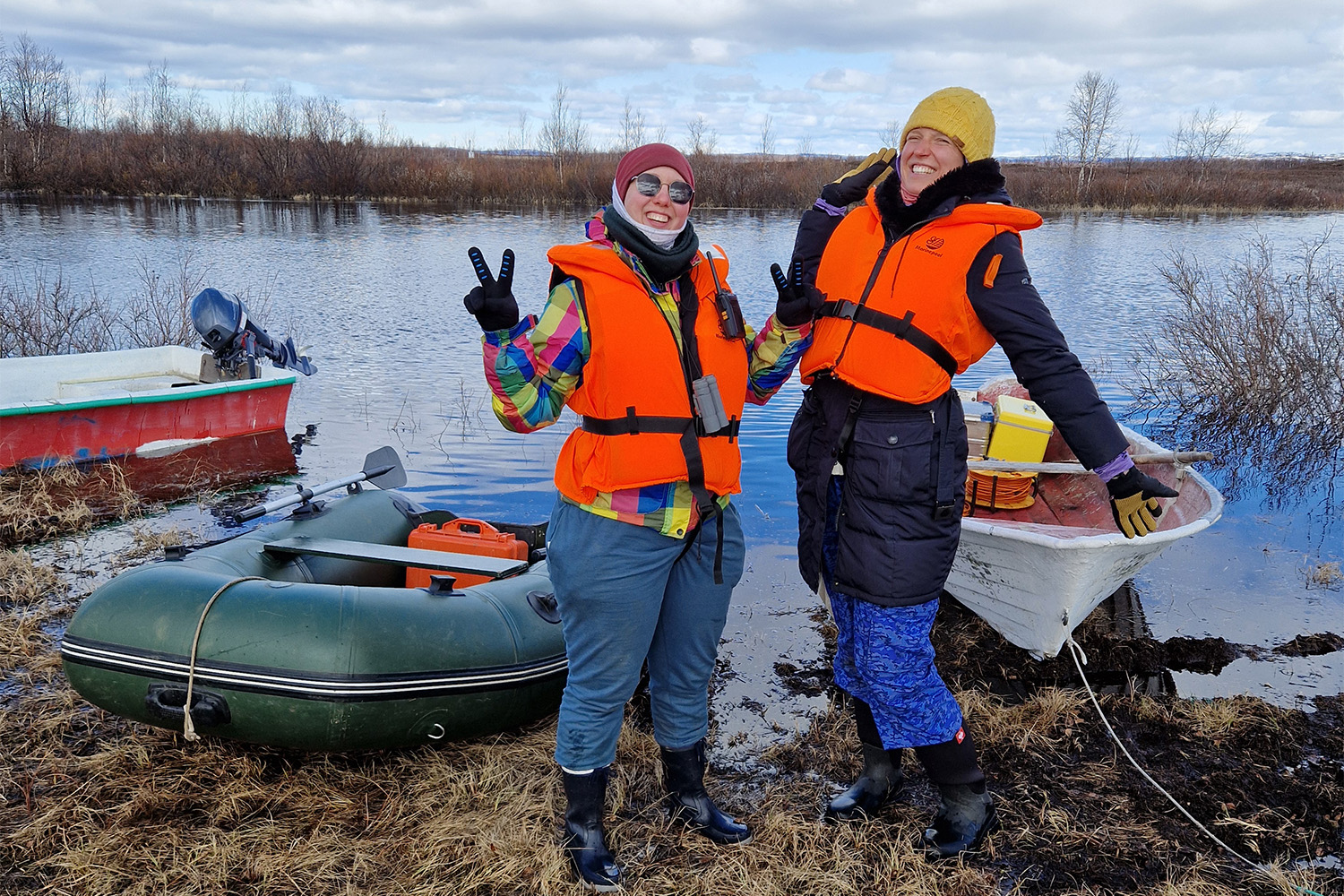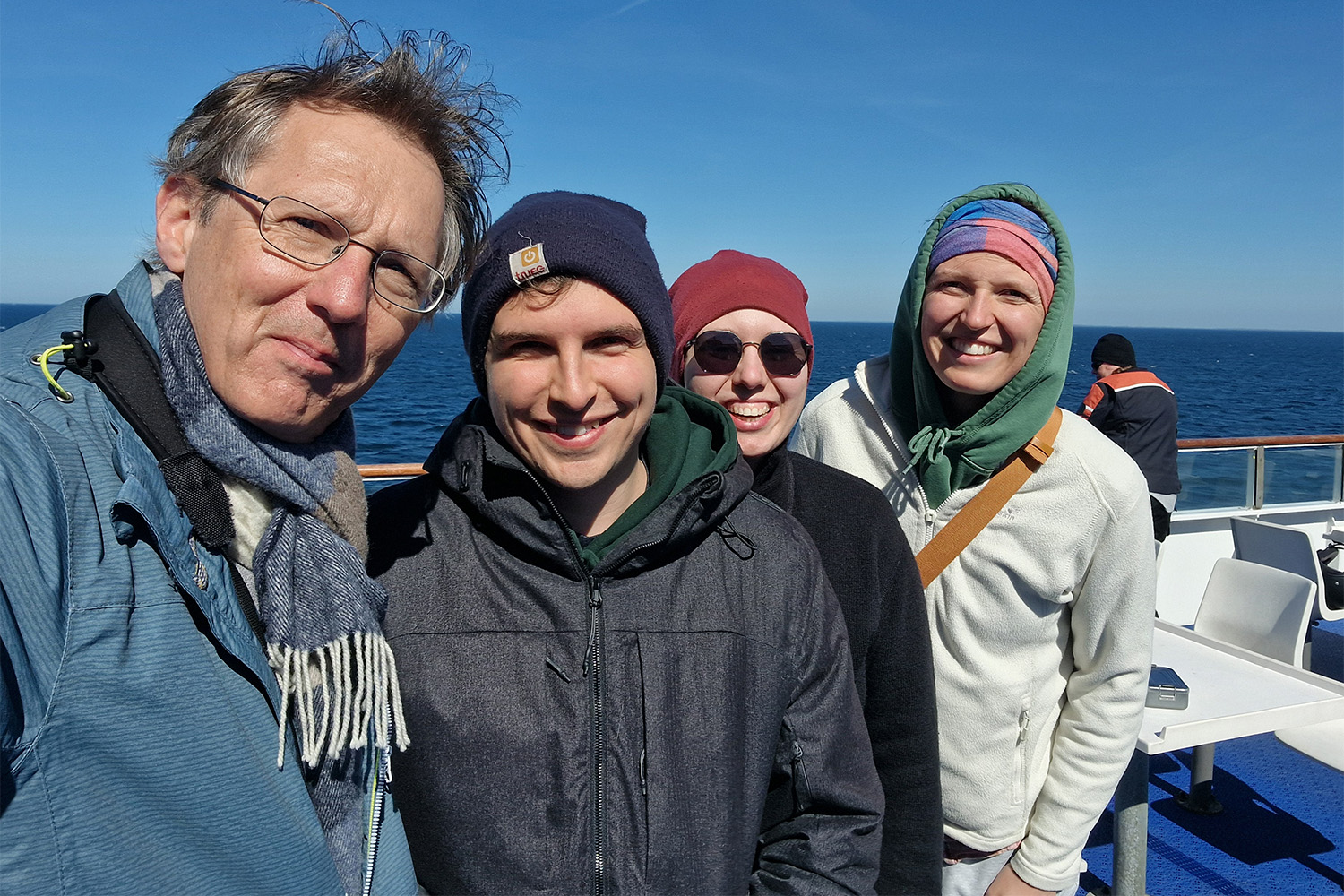Geophysics makes you happy
… especially after a successful measurement campaign. The two Bachelor’s students from TU Braunschweig, Isabella Burger (Physics) and Annika Pischke (Environmental Sciences), spent two weeks travelling in Finnmark, north of the Arctic Circle, together with doctoral student Raphael Schulz and Professor Andreas Hördt to carry out geoelectric measurements on frozen peat bogs. A report by Andreas Hördt.

Bachelor‘s students Isabella Burger and Annika Pischke at a rest stop in Sweden. Photo credit: Andreas Hördt/TU Braunschweig
The palsas are an exciting object of study: mounds within a peat bog that are thought to have a solid ice core and are slowly disintegrating as a result of climate change. The aim of the measurement campaign in Norway was to investigate the structure within the palsas and in the surrounding peatlands. Geophysics allows us to look below the surface without drilling. Electrical methods and georadar are used to produce images of the subsurface, which provide important information about the material composition.
Unique method of measuring ice content
In particular, the ice content, which can vary from around 20 per cent to a complete ice core, was the aim of the measurements. The High Frequency Induced Polarisation method was developed at the Institute of Geophysics and Extraterrestrial Physics for this purpose. It is the only method of its kind in the world that has been specifically designed to estimate ice content. Because of its great potential, its application in the Scandinavian peat bogs is funded by the German Research Foundation (DFG).

Heavy equipment had to be carried several 100 metres through the moor or … Photo credit: Andreas Hördt/TU Braunschweig
Hard work in the moor
Collecting the data also involved some hard work. Heavy equipment had to be carried several hundred metres across the bog, or transported in boats lent by the very helpful local people and the Institute of Geoecology. Occasionally things got a bit adventurous, but apart from the odd soaked gumboots and a stuck car that had to be freed under our own steam, there were no incidents worth mentioning.

… transported by boat. Photo credit: Andreas Hördt/TU Braunschweig
The data is now awaiting analysis over the coming months. The quality control of the measurements in the field gives us hope that the goals of the expedition can be achieved. Geophysics almost always makes you happy, but when everything goes according to plan – good weather, good mood, good data – it is particularly easy.

On an expedition in Norway: Prof. Andreas Hördt with doctoral student Raphael Schulz and students Isabella Burger and Annika Pischke. Photo credit: Andreas Hördt/TU Braunschweig
